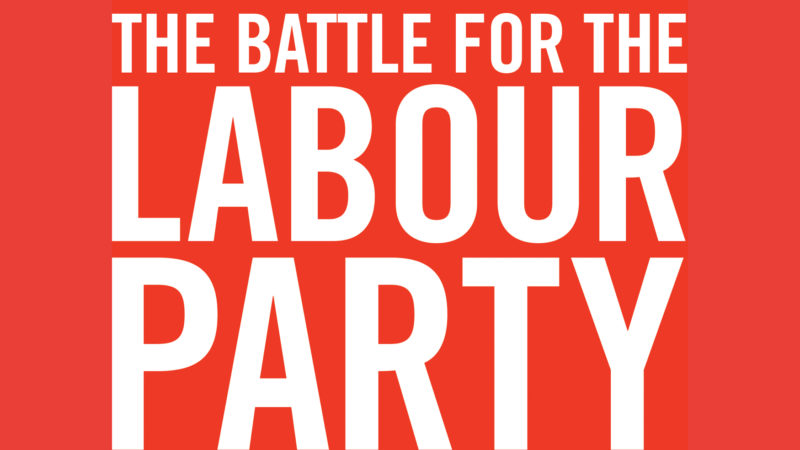
For a 25% discount on David Kogan’s Protest and Power: the Battle for the Labour Party, order from Bloomsbury.com and quote LABOURLIST25 at the checkout. LabourList will get £1 for every copy bought using this code.
Revisiting the scene of the crime is always dangerous. Writing the sequel to a book about the Labour Party after a 40-year gap is positively crazy but in 1981-2 I wrote a book (‘The Battle for the Labour Party’) about the unknown activists who had radically changed the Labour Party over the previous three years. This week I publish the sequel, Protest and Power: The Battle for the Labour Party. It features some of the same people but covers much more ground to chronicle the last 45 years of Labour’s very own version of Game of Thrones and reflects on why Labour has won only three of ten general elections since 1979, and since 1945 only three leaders – Clement Attlee, Harold Wilson and Tony Blair – have won power from sitting Conservative governments.
In 1979, Labour fell into trauma after losing to Margaret Thatcher. The national media focussed on MPs as Tony Benn, Eric Heffer and Dennis Skinner, who were slugging it out on the conference floor and in the national executive committee (NEC) with James Callaghan, Michael Foot, then Neil Kinnock and Roy Hattersley. It ignored a far more interesting phenomenon: the unknowns in the Campaign for Labour Party Democracy led by Vladimir Derer, who with Andy Harris, Pete Willsman, Jon Lansman and Chris Mullin created an organisation that influenced hundreds of CLPs and union branches to press for radical change. These were the years of the electoral college and the Benn campaign for deputy leader, along with the new leadership of Ken Livingstone and John McDonnell at the Greater London Council from 1981. I witnessed and recorded it all.
Politics was dominated by constant smoking, the clatter of manual typewriters and non-stop shouting at fringe meetings. The art of paper management was a skill. Writing and copying leaflets that explained detailed constitutional amendments and voting instructions and handing them out to hundreds of delegates. My book was captured in a BBC docu-drama in 1983. ‘The Campaign’ featured real footage but also, bizarrely, actors playing Vladimir, Willsman, Mullin, various union executives and Robert Glenister in his TV first role playing Jon Lansman. It’s a real taste of just how badly people in that era dressed but it was politics in the raw. It is still on YouTube.
Then it was all over. In 1982, the big union general secretaries and Neil Kinnock led the counter revolution, which took the party away from the new left and back into the mainstream. New Labour followed and power was rediscovered.
For the sequel, I wanted to do the story of the left – its rise, fall and rise again. However, the story of Labour is much more nuanced than focussing on one element of the party. Every new leadership repudiates its predecessors and reinvents the future. The last four years have been dramatic but they didn’t happen in a vacuum. To capture the full story, I interviewed dozens of big beasts including three former party leaders and other senior figures from the Kinnock, New Labour and Miliband years about their time in control and their successes and failures. The book also includes John McDonnell and Jon Lansman on being victims of that control. Now that pendulum has swung in the opposite direction.
As in 1981, I wanted to capture the latest generation of activists as well as leaders of the party. The huge growth of membership has brought new and different talent with it. In 2015, Momentum was forged between the veterans Lansman and McDonnell and the new activists Emma Rees, Adam Klug, James Schneider and Laura Parker. Rachel Godfrey Wood of Momentum has the same tactical drive as CLPD strategists. Harry Hayball’s social media output has had a far wider impact than leafletting but the same mobilising effect. CLPD’s paper management of composite motions in 1980 and 1981 was replicated by Another Europe is Possible at last year’s conference campaigning for the Brexit composite. Jon Lansman’s leaflets in 1980 have been channelled by Michael Chessum’s laptop in 2019.
For every event, I‘ve tried to get a wide perspective. As an example, the 2016 ‘chicken coup’ includes interviews with Margaret Hodge, Lucy Powell, John McDonnell, Rebecca Long-Bailey, Jon Lansman, Jonathan Ashworth and also the Momentum activists who drove the second leadership campaign.
Why the detail and wider view? You get better anecdotes, but you also counteract the danger of the history getting lost as the party changes. The one thing we know about Labour is nothing is forever. Tectonic shifts happen very fast. 40 years of time travel in the past is no bad way to think about the future.
For a 25% discount on David Kogan’s Protest and Power: the Battle for the Labour Party, order from Bloomsbury.com and quote LABOURLIST25 at the checkout. LabourList will get £1 for every copy bought using this code.




More from LabourList
‘Africa must be the UK’s top foreign policy priority in 2026’
‘Standing up to power is not optional when politically uncomfortable. It’s essential’
Venezuela: ‘Sovereignty, the law and the UK government response are all being confused’